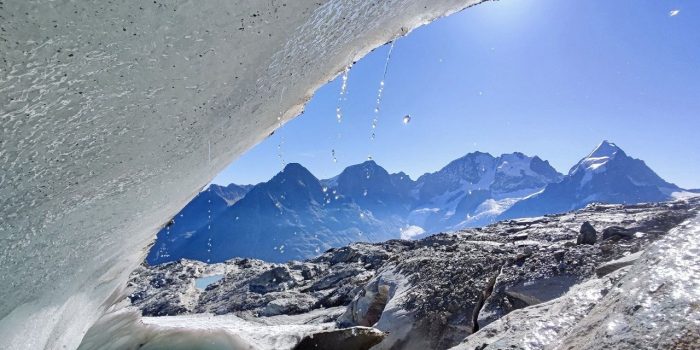A recent report has found that Swiss glaciers have shrunk and lost their volumes by 10% in just two years.
Scientists have repeatedly explained and warned the world of the climate change phenomenon which is getting worse just because we refuse to stop burning fossil fuels such as gas and oil which eventually leads to extreme weather conditions such as very hot summers and winters with lesser snow. This leads to rapid melting of glaciers which can be observed as the volume lost during the hot summers of 2022 and 2023 is the same as that lost between 1960 and 1990.
The Swiss Academy of Sciences looked into this and discovered that 4% of Switzerland’s glacier ice disappeared this year, which is the second-largest loss ever recorded. The biggest loss was in 2022, with a 6% drop, the largest thaw ever measured.
Some experts have stopped measuring the ice on certain glaciers because there’s hardly any left. For example, the St Annafirn glacier in central Switzerland has mostly melted.
Matthias Huss, who heads Glacier Monitoring in Switzerland (Glamos), said this is due to a combination of climate change and unusual weather. He warned that if we continue like this, we will have bad years every year.

Small glaciers are vanishing because the ice is melting quickly. To save Switzerland’s ice, we need to reduce our emissions, but even if we do a good job of that, only a third of the glacier ice in Switzerland is expected to remain. This means most small glaciers will disappear, and the big ones will become much smaller. However, there will still be some ice in the highest parts of the Alps, and we can show them to our grandchildren.
This year, the Swiss Alps experienced record-high temperatures. In August, which is when most melting happens, the altitude where snow turns into ice was higher than ever before, even higher than Mont Blanc. This is causing changes in the mountain landscape, like new lakes forming next to glaciers and rocks appearing as the ice thins. They’ve even found things that were buried under the ice for a long time.
Swiss records on glaciers go back mainly to 1960, and for some glaciers, they date back to 1914. These records show how the ice has been changing over time.


